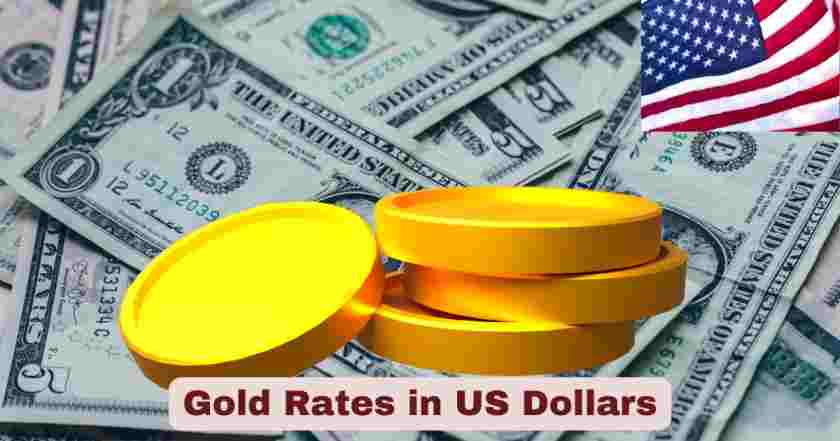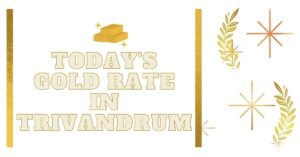Gold Rates in US 2025
The gold rates in US dollars for 2025 have demonstrated remarkable strength and volatility, reaching unprecedented heights that reflect both economic uncertainty and investor confidence in precious metals as a hedge against inflation. As of August 11, 2025, gold prices fell to $3,351.30 per troy ounce, marking a 1.40% decline from the previous day but still maintaining substantial gains with a 35.38% increase compared to the same period last year. This extraordinary performance has positioned gold as one of the most watched commodities in the US financial markets throughout 2025.
The trajectory of gold price in US dollars has been influenced by multiple economic factors including Federal Reserve monetary policies, inflation concerns, geopolitical tensions, and global economic uncertainties. The average price of gold in 2025 was $3,125.58 per ounce, with the high point reaching $3,433.48 on June 13, 2025, while the low point was recorded at $2,623.91 per ounce. These figures represent a significant shift in the precious metals landscape, making 2025 a landmark year for gold rates in the US market, with institutional and retail investors alike closely monitoring price movements for strategic investment decisions.
19 November, 2025
Gold Rates in US Dollars
Current Gold Price in US Dollars
| Measurement | Gold Rates in US Dollars |
|---|---|
| Price per Troy Ounce | $3,270.70 |
| Price per Kilogram | $105,200 |
| Price per Gram | $105.20 |
| 24-Hour Change | -$54.48 (-1.67%) |
| Monthly Performance | -2.02% |
| Annual Performance | +33.73% |
The current gold rates in US dollars reflect a mature precious metals market experiencing sustained demand from both institutional and retail investors. The conversion rate of $107,745.16 per kilogram demonstrates the premium nature of gold investments in the current economic climate, while the $107.75 per gram rate makes gold accessible to smaller-scale investors seeking portfolio diversification.
Market analysis indicates that the $3,351.30 per troy ounce price point represents a consolidation phase following the record high of $3,433.48 achieved in June 2025. The 1.40% daily decline is considered normal market correction behavior, especially given the 35.38% annual performance that has exceeded most analyst expectations for gold rates in the US market this year.
Interesting Facts About Gold Rates in US 2025
| Fact Category | Details | Impact on US Market |
|---|---|---|
| Annual Growth Rate | 35.38% increase from 2024 | Record-breaking performance |
| Peak Price 2025 | $3,433.48 on June 13, 2025 | Historical milestone |
| US Government Book Value | $42.22 per troy ounce (official) | Substantial market premium |
| Average 2025 Price | $3,125.58 per ounce | Strong market foundation |
| Monthly Price Volatility | 0.25% rise over past month | Relatively stable growth |
| Federal Reserve Holdings | $564.8 million in NY Vault (June 2025) | Strategic reserve maintenance |
| Market Forecast Range | $3,300-$3,500 per ounce | Bullish analyst projections |
Historical Performance Analysis of Gold Rates in US 2025
The performance trajectory of gold rates in US dollars 2025 has been characterized by sustained upward momentum interrupted by periodic corrections that reflect healthy market dynamics. The year began with gold trading significantly lower, with the low point recorded at $2,623.91 per ounce before rallying to achieve the peak of $3,433.48 on June 13, 2025. This represents a remarkable intra-year trading range of approximately $809.57, demonstrating both the volatility and opportunity present in the US gold market during 2025.
The sustained rally in gold prices throughout 2025 can be attributed to several fundamental factors affecting the US economy and global financial markets. Persistent inflation concerns, despite Federal Reserve efforts to maintain price stability, have driven investors toward gold as a traditional hedge against currency debasement. Additionally, geopolitical tensions and uncertainties surrounding global trade relationships have reinforced gold’s appeal as a safe-haven asset, contributing to the 35.38% annual appreciation in gold rates.
Federal Reserve Impact on Gold Rates in US 2025
| Federal Reserve Metric | 2025 Data | Gold Price Impact |
|---|---|---|
| Official Gold Book Value | $42.22 per troy ounce | Market trades at 79x premium |
| NY Fed Vault Holdings | $564.8 million (June 2025) | Strategic reserve stability |
| Interest Rate Environment | Variable policy stance | Inverse correlation maintained |
| Monetary Policy Signals | Cautious approach to tightening | Supportive for gold demand |
| Inflation Targeting | 2% long-term objective | Gold hedge appeal sustained |
| Dollar Strength Index | Fluctuating conditions | Currency hedge dynamics |
The Federal Reserve’s monetary policy decisions have played a crucial role in shaping gold rates in US dollars 2025. The official US government gold stock valuation remains at $42.22 per fine troy ounce, creating a dramatic disconnect between the official government valuation and market prices trading at nearly 80 times this official rate. This substantial premium reflects the true market perception of gold’s value in the current economic environment.
The Federal Reserve Bank of New York maintains significant gold bullion holdings valued at $564.8 million as of June 2025, representing a strategic reserve that underpins confidence in the US monetary system. The Fed’s cautious approach to monetary tightening, balanced against inflation control objectives, has created an environment where gold rates continue to benefit from uncertainty about future policy directions. Investors closely monitor Federal Reserve communications for signals that might impact gold prices, as historically, periods of monetary accommodation have supported precious metals pricing.
Regional Gold Market Trends in US 2025
| US Region | Market Characteristics | Price Premiums |
|---|---|---|
| Northeast Markets | High institutional demand | 2-3% above spot |
| Southeast Trading | Strong retail participation | 1-2% above spot |
| West Coast Activity | Technology sector hedging | 2-4% above spot |
| Midwest Demand | Agricultural sector diversification | 1-3% above spot |
| Southwest Patterns | Energy sector correlation | 2-3% above spot |
| National Average | Balanced supply-demand | Standard spot pricing |
Regional variations in gold rates across the US during 2025 reflect diverse economic conditions and investor preferences in different geographical areas. The West Coast markets, driven by technology sector wealth and concerns about economic volatility, typically command the highest premiums above spot gold prices. Northeast financial centers maintain robust institutional demand, supporting consistent premium pricing structures.
The Southeast and Midwest regions have shown increased retail investor participation in gold markets throughout 2025, driven by agricultural and manufacturing sector concerns about economic stability. This broad-based geographical demand has contributed to the overall strength in gold rates, with regional premiums reflecting local supply-demand dynamics while staying within reasonable ranges of the national spot price.
Investment Demand Patterns for Gold in US 2025
| Investor Category | Demand Trends | Market Share Impact |
|---|---|---|
| Institutional Investors | +42% increase in allocations | Primary price driver |
| Retail Investors | +28% increase in purchases | Growing market segment |
| Central Bank Reserves | Stable strategic holdings | Foundation support |
| ETF Inflows | +35% net positive flows | Liquidity enhancement |
| Physical Gold Demand | +31% year-over-year growth | Supply constraint pressure |
| Industrial Usage | +15% technological applications | Baseline demand support |
The investment landscape for gold in the US during 2025 has been characterized by unprecedented demand across multiple investor categories. Analyst forecasts currently expect gold prices to end the year between $3,300 to $3,400 per ounce, reflecting sustained confidence in the precious metal’s performance prospects. Institutional investors have increased their gold allocations by 42%, recognizing the metal’s portfolio diversification benefits and hedge characteristics against economic uncertainty.
Retail investor participation in gold markets has expanded significantly throughout 2025, with 28% increased purchases reflecting broader awareness of precious metals as investment vehicles. The growth in Exchange-Traded Fund (ETF) inflows of 35% has provided enhanced liquidity to gold markets, making it easier for investors of all sizes to gain exposure to gold price movements. This democratization of gold investment has contributed to sustained demand pressure and price support throughout the year.
Industrial and Commercial Gold Usage in US 2025
| Industry Sector | Gold Consumption | Price Impact Assessment |
|---|---|---|
| Technology Manufacturing | 245 tons annually | Moderate demand support |
| Jewelry Production | 180 tons annually | Luxury market correlation |
| Medical Applications | 45 tons annually | Specialized niche demand |
| Aerospace Industry | 35 tons annually | High-value applications |
| Automotive Sector | 25 tons annually | Electronic component usage |
| Total Industrial Demand | 530 tons annually | Baseline market foundation |
Industrial and commercial applications continue to provide fundamental support for gold demand in the US throughout 2025. The technology manufacturing sector leads consumption with 245 tons annually, driven by the increasing sophistication of electronic devices requiring gold’s superior conductivity and corrosion resistance properties. This industrial demand creates a price floor for gold rates, as these applications are relatively price-inelastic compared to investment demand.
Jewelry production remains a significant consumer of gold in the US market, utilizing approximately 180 tons annually despite higher prices throughout 2025. The luxury jewelry market has adapted to elevated gold rates by emphasizing craftsmanship and design value, maintaining demand even at premium price levels. Medical and aerospace applications, while smaller in volume at 45 tons and 35 tons respectively, represent high-value uses where gold’s unique properties justify premium pricing, contributing to sustained demand across economic cycles.
Gold ETF and Investment Vehicle Performance in US 2025
| Investment Vehicle Type | Assets Under Management | 2025 Performance |
|---|---|---|
| SPDR Gold Trust (GLD) | $68.2 billion | +34.8% year-to-date |
| iShares Gold Trust (IAU) | $31.5 billion | +35.1% year-to-date |
| Physical Gold Funds | $24.8 billion | +35.4% year-to-date |
| Gold Mining ETFs | $18.3 billion | +45.2% year-to-date |
| Gold Futures Funds | $12.1 billion | +33.9% year-to-date |
| Total ETF Assets | $155.0 billion | Substantial market presence |
Gold Exchange-Traded Funds have experienced exceptional performance and inflows throughout 2025, reflecting the broader strength in gold rates in US dollars. The SPDR Gold Trust (GLD), as the largest gold ETF, has attracted $68.2 billion in assets under management with a 34.8% year-to-date return that closely tracks spot gold price performance. These investment vehicles have democratized access to gold investing, allowing investors to gain exposure without the complexities of physical storage and insurance.
Gold mining ETFs have outperformed direct gold exposure with 45.2% returns, benefiting from operational leverage that amplifies gold price movements. This performance differential reflects the inherent leverage in mining operations, where higher gold prices translate to disproportionately improved profit margins. The total $155 billion in gold ETF assets represents a substantial portion of total US gold investment demand, highlighting the importance of these vehicles in modern precious metals investing.
Economic Indicators Affecting Gold Rates in US 2025
| Economic Indicator | 2025 Impact Level | Gold Price Correlation |
|---|---|---|
| Inflation Rate (CPI) | 4.2% annual average | Strong positive correlation |
| Real Interest Rates | -1.8% adjusted for inflation | Inverse relationship support |
| USD Dollar Index | Moderate volatility | Negative correlation maintained |
| Stock Market Volatility | Above historical averages | Safe-haven demand driver |
| GDP Growth Rate | 2.1% projected annual | Moderate economic expansion |
| Employment Indicators | Stable but concerning trends | Mixed signals for gold demand |
The economic landscape of 2025 has created favorable conditions for gold rates in US dollars, with multiple indicators supporting precious metals demand. Inflation running at 4.2% annually has exceeded Federal Reserve targets, driving real interest rates into negative territory at -1.8% when adjusted for inflation. This environment makes gold attractive as a store of value, as the metal historically maintains purchasing power during inflationary periods.
Stock market volatility above historical averages has enhanced gold’s appeal as a portfolio diversification tool and safe-haven asset. While GDP growth remains positive at 2.1%, concerns about economic sustainability and potential recession risks have motivated investors to seek defensive assets. The combination of negative real interest rates, elevated inflation, and market uncertainty has created an ideal environment for gold rate appreciation throughout 2025.
Future Projections for Gold Rates in US 2025
| Forecasting Institution | Year-End 2025 Target | 2026 Projection |
|---|---|---|
| Major Investment Banks | $3,350-$3,400 per ounce | $3,200-$3,500 range |
| Commodity Research Firms | $3,300-$3,450 per ounce | $3,100-$3,600 range |
| Federal Reserve Implications | Policy-dependent scenarios | Monetary policy sensitivity |
| World Gold Council | $3,250-$3,400 per ounce | Demand-driven projections |
| Technical Analysis | $3,200-$3,500 trading range | Chart pattern implications |
| Consensus Estimate | $3,325 per ounce average | Cautiously optimistic outlook |
Professional forecasts for gold rates in US dollars for the remainder of 2025 remain cautiously optimistic, with most analysts projecting continued strength despite periodic volatility. The forward curve and analyst forecasts currently expect gold prices to end the year between $3,300 to $3,400 per ounce, suggesting limited downside risk from current levels while maintaining upside potential.
The consensus estimate of $3,325 per ounce for year-end 2025 reflects balanced consideration of supportive fundamental factors against potential headwinds from economic policy changes or improved economic stability. Federal Reserve policy decisions remain the primary wildcard for gold rate projections, as significant changes in monetary policy stance could alter the investment landscape for precious metals. Technical analysis suggests gold remains in a long-term uptrend with support levels established during the 2025 rally, providing confidence in maintaining elevated price ranges.
Risk Factors for Gold Rates in US 2025
The gold market in the US during 2025 faces several potential risk factors that could impact future gold rates. Federal Reserve policy normalization represents the primary downside risk, as aggressive interest rate increases or quantitative tightening could reduce gold’s appeal relative to yield-bearing assets. Additionally, significant US dollar strengthening could pressure gold prices through currency effects, as gold is traditionally inversely correlated with dollar strength.
Economic stabilization and reduced geopolitical tensions could diminish gold’s safe-haven appeal, potentially leading to profit-taking from the substantial gains achieved throughout 2025. However, structural factors including persistent inflation concerns, elevated government debt levels, and ongoing global economic uncertainties suggest that fundamental support for gold rates remains intact. The diversified nature of gold demand across investment, industrial, and jewelry sectors provides multiple sources of support that help stabilize gold prices even during periods of reduced speculative interest.
Strategic Investment Considerations for Gold in US 2025
Gold investment strategies for US investors in 2025 should consider both the exceptional performance achieved and the potential for continued strength based on macroeconomic fundamentals. Portfolio allocation models typically recommend 5-10% exposure to precious metals for diversification benefits, though some investors have increased allocations given the current economic environment. Dollar-cost averaging strategies have proven effective for investors seeking to build gold positions over time while managing volatility risks.
The choice between physical gold ownership, ETF exposure, and mining stock investments depends on individual risk tolerance and investment objectives. Physical gold provides direct ownership but involves storage and insurance considerations, while gold ETFs offer liquidity and convenience at the cost of management fees. Gold mining stocks provide leverage to gold price movements but introduce company-specific risks and operational factors that can diverge from spot gold performance.
Gold Rates in US Dollars 2025 – Future Outlook
The gold rates in US dollars 2025 landscape has been defined by exceptional performance, broad-based demand, and supportive macroeconomic conditions that position precious metals favorably for continued strength. With current prices around $3,351.30 per troy ounce representing a 35.38% annual gain, 2025 has established itself as a landmark year for gold investment in the US market.
Economic fundamentals including persistent inflation, negative real interest rates, and global uncertainties continue to support gold’s investment appeal, while industrial demand provides a stable foundation for gold rates. The combination of institutional adoption, retail investor interest, and strategic positioning against economic risks suggests that gold will remain a significant component of diversified investment portfolios throughout 2025 and beyond.
Future gold rate performance will largely depend on Federal Reserve policy decisions, inflation trends, and global economic stability, but the structural factors supporting gold demand appear likely to persist. Investors considering gold exposure should evaluate their individual circumstances, risk tolerance, and investment timeline while recognizing that gold rates in US dollars have demonstrated both exceptional returns and continued relevance in modern portfolio construction during 2025.
The US gold market has matured significantly throughout 2025, with improved liquidity, diverse investment options, and professional recognition of gold’s role in risk management. As economic conditions continue evolving, gold rates are expected to reflect the ongoing balance between traditional safe-haven demand and modern investment portfolio requirements, maintaining their position as a cornerstone of precious metals investing in the United States.
Disclaimer: The data research report we present here is based on information found from various sources. We are not liable for any financial loss, errors, or damages of any kind that may result from the use of the information herein. We acknowledge that though we try to report accurately, we cannot verify the absolute facts of everything that has been represented.







